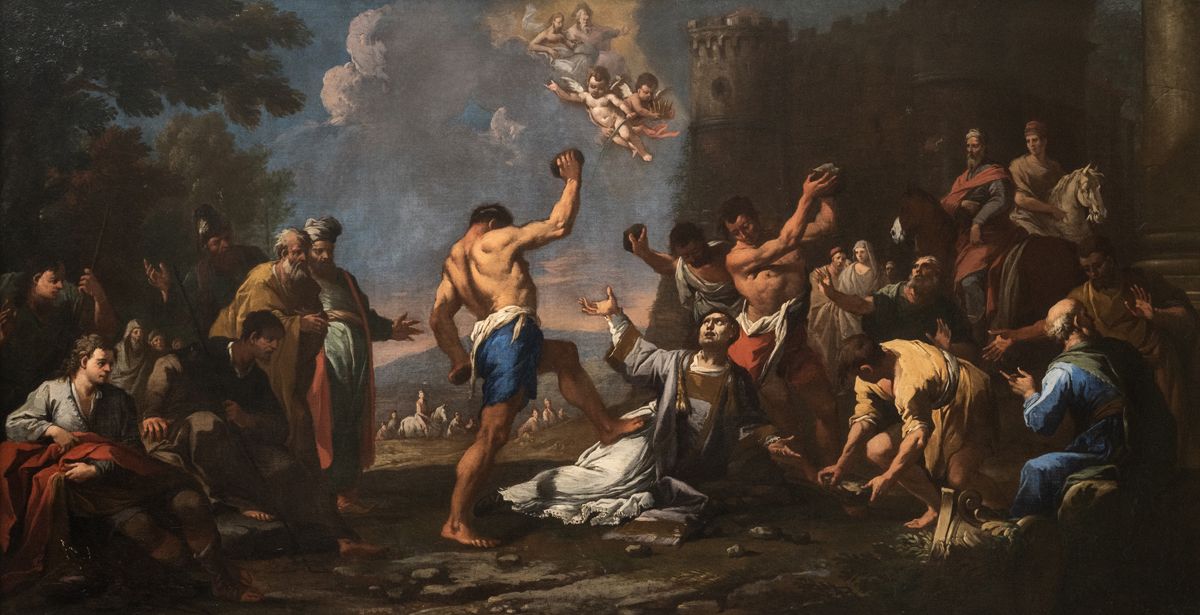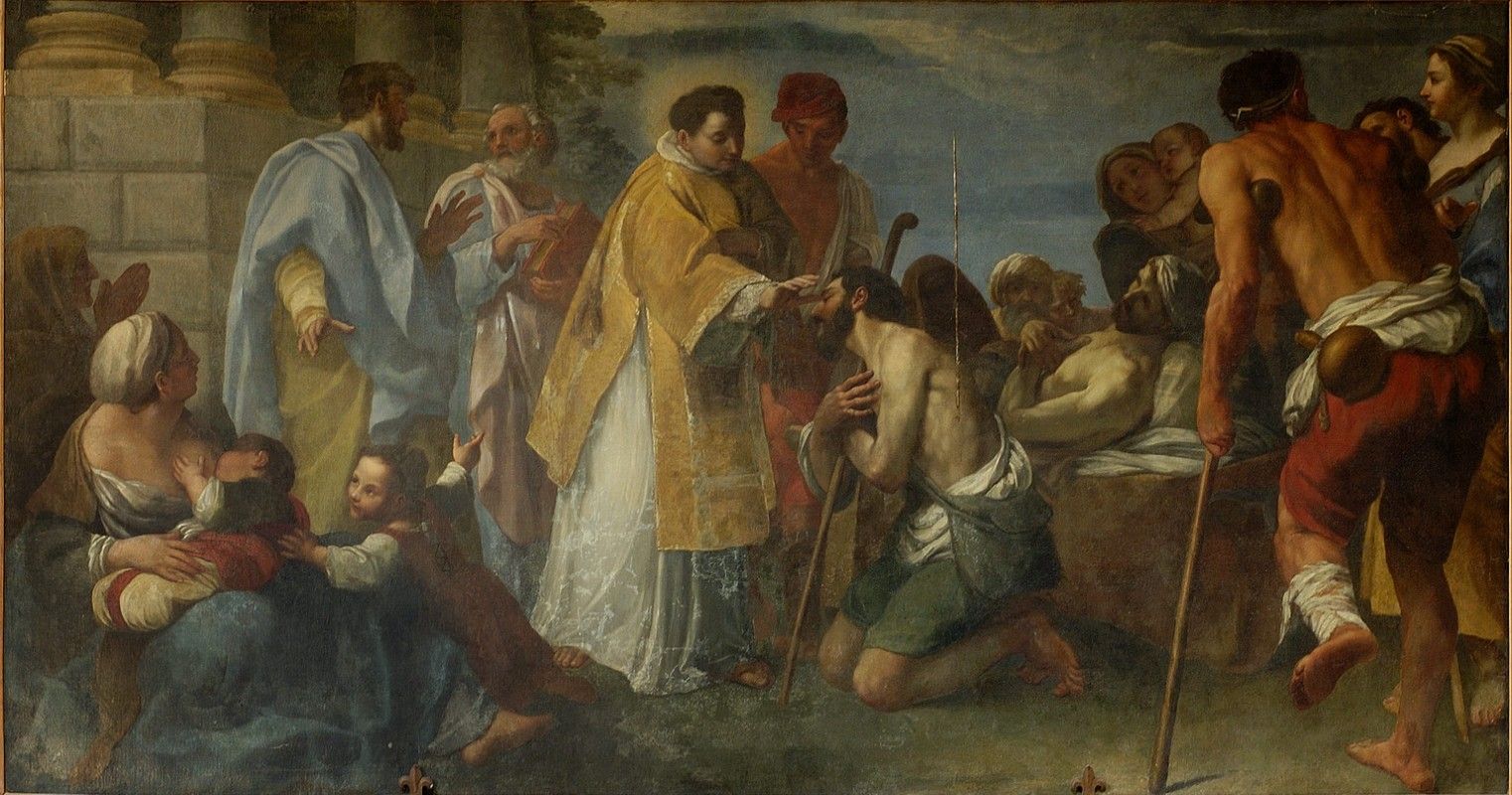Marco Benefial (1684–1764)
Stoning of St. Stephen, c. 1730
Oil on canvas
McMullen Museum of Art, Boston College, 1988.29

Nancy Netzer
Inaugural Robert L. and Judith T. Winston Director, McMullen Museum and Professor, Art History

The painting depicts the story of the first Christian martyr, Stephen (c. 5–34 CE), as told in the Acts of the Apostles 6:8–7:60. A deacon of the early Church in Jerusalem, Stephen was accused of blasphemy and stoned to death. Succumbing to his fate in front of Jerusalem’s Damascus Gate in the background, Stephen occupies the central position in the painting. He looks up at his primary executioner, Saul (who later became the Apostle Paul) seemingly pleading for mercy. Illustrating Stephen’s vision as described in the biblical account, God the Father and Christ “at his right hand” attended by two cherubs each holding a symbol of Stephen’s martyrdom (a crown and palm frond) appear above. Animated figures in a variety of poses as well as soldiers on horseback observe the brutal stoning. The complexity of the composition in a painting of this size suggests it was made as a preliminary oil sketch (bozzetto) for a larger work.
The painting has been attributed convincingly by a former Boston College undergraduate, Molly Phelps ’14, to Marco Benefial, a Roman painter trained in the classical tradition and sober realism of Raphael and Annibale Carracci. In the 1720s and 1730s, Benefial produced other paintings depicting emotionally intense events from the life of martyrs, including St. Stephen (see image). Several incorporate shirtless violent figures similar to those in the McMullen painting.

